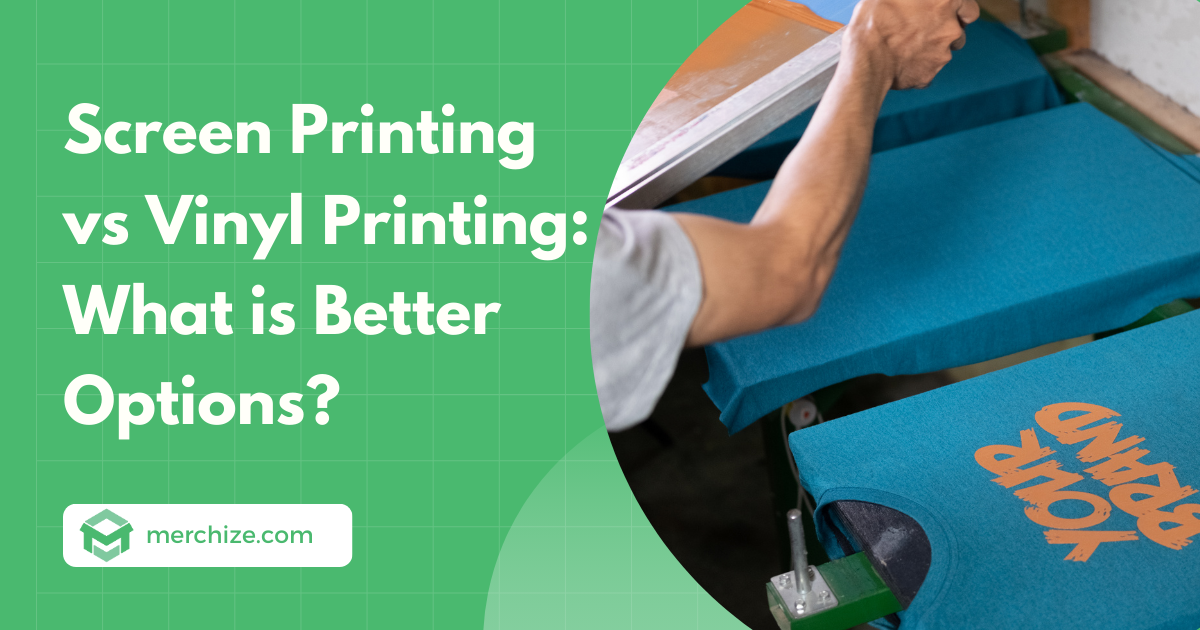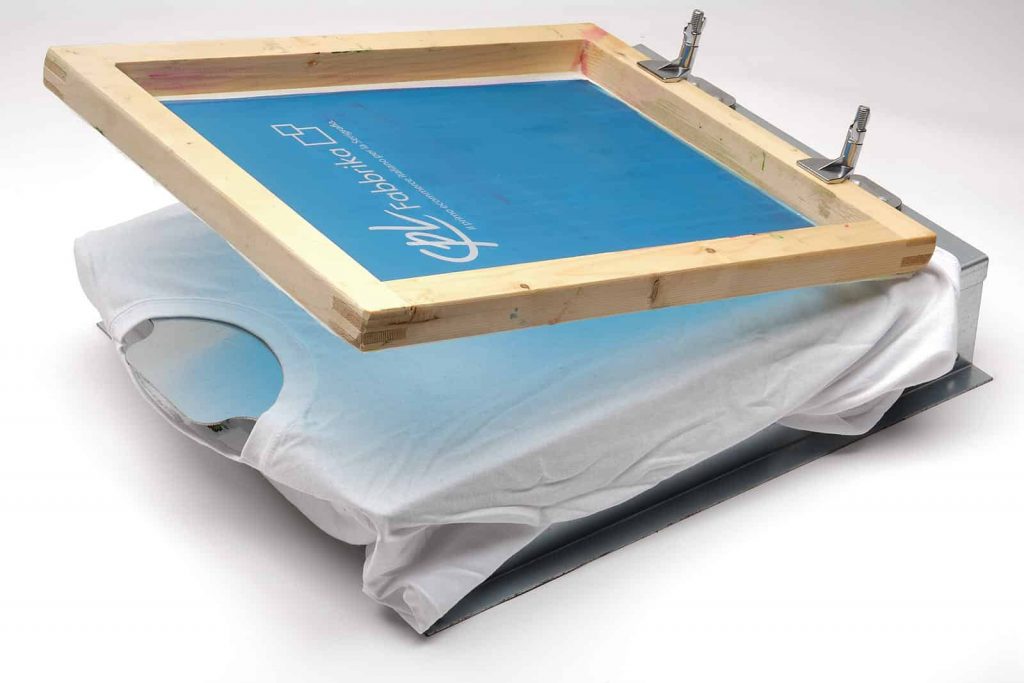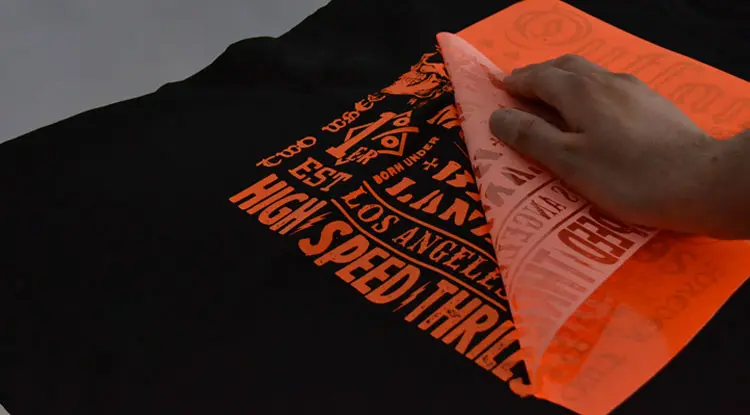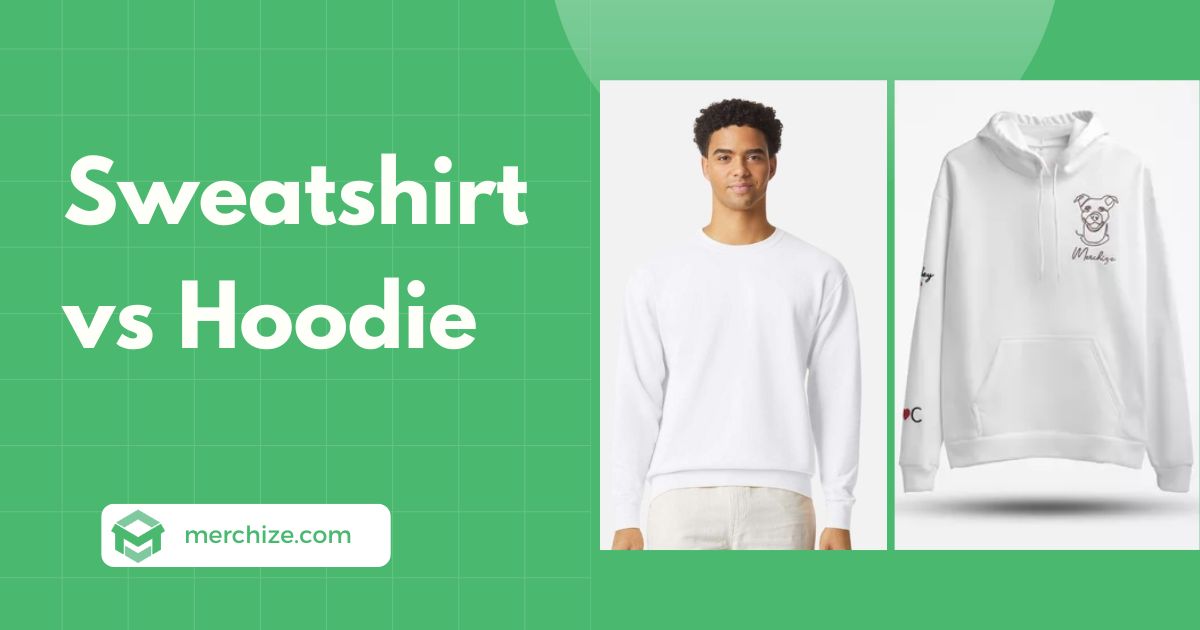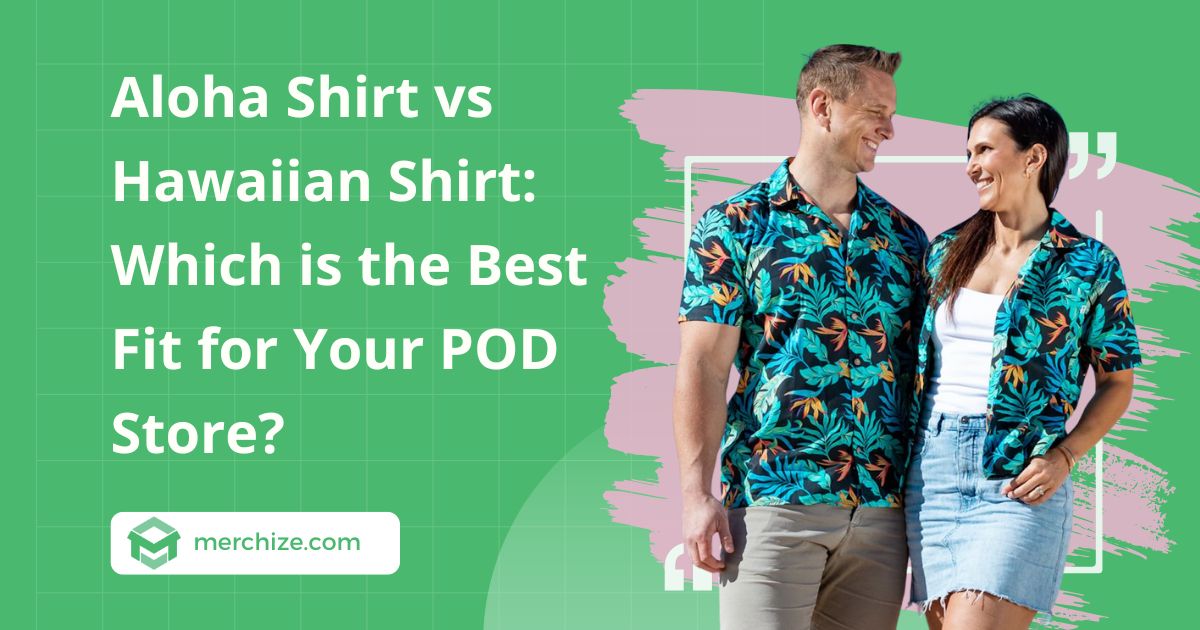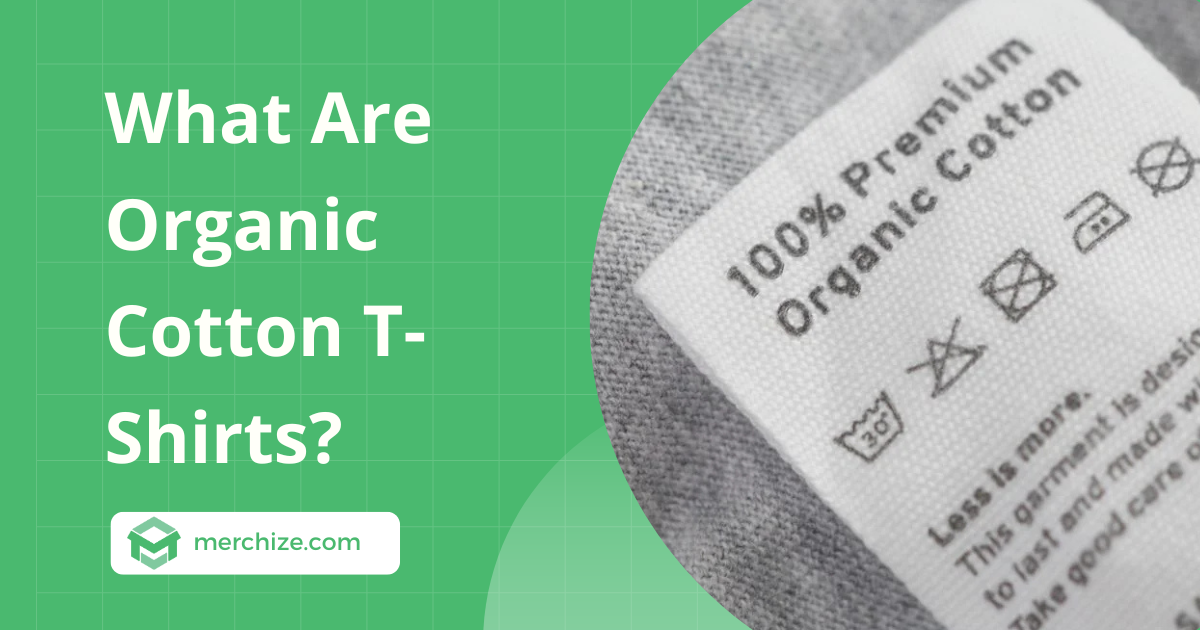Contents
When starting a T-shirt-selling business, you might have to come across a lot of printing options. Some of the most popular and notable ones are screen printing and vinyl printing. In this post, we will dive into the comparison between screen printing and vinyl printing and see which one is the most suitable for your business.
1. Screen Printing vs Vinyl printing: What are these printing techniques?
To fully understand how these two options fare against each other, it is important to have a grasp of how these two printing techniques work.
Screen printing
Screen printing is arguably one of the oldest printing techniques in the world. This printing technique is somewhat similar to stencil printing, with a small twist: Instead of direct application, screen printing uses a stencil screen made of fine mesh.
This stencil is often made of a light-sensitive emulsion that hardens when exposed to light, leaving open areas for ink to pass through. When you apply the ink onto the stencil screen, the ink will pass through and be printed into the fabric.
With this technique, if your design has multiple colors, each color is applied one at a time using a different screen.
Finally, after all the colors are added, the ink is cured or dried, making it permanent on the material.
It’s a versatile and time-tested technique suitable for various surfaces, from fabrics to paper and even metal.
>>> Also read: Screen Printing Vs. Embroidery: Which is Right for You?
Vinyl printing
Vinyl printing works differently from screen printing. You won’t directly apply the ink into the fabric. Instead, the designs will be printed into a vinyl sheet and cut out using a computer-controlled blade, providing a super precise cut design. Next, the excess vinyl that is not a part of your design is peeled away, leaving only your actual design on a sticky backing.
To transfer the design into the fabric, what you need to do is to apply a transfer tape over your design. It’s like a temporary carrier that helps move your design from the backing to the final surface.
Now, you can place the transfer tape onto the surface you want to print on. From here, the print will be heatpressed into the material. After the heat pressing, the transfer tape will be removed, and the design will stick to the fabric, leaving the beautiful print as you wish.
2. What are the differences between screen printing and vinyl printing?
Finding the best type of T-shirt printing is an important issue to consider when you just start your T-shirt clothing line. In the following, we will dive into the pros and cons, and differences between screen printing and vinyl printing.
Print Quality
The biggest concern when it comes to choosing the printing technique is the print quality. Of course, to deliver the best product that makes your customers happy, you would prefer the printing technique that delivers the best results.
Screen printing typically results in a smooth and soft finish, especially when water-based inks are used on fabric. On the other hand, the ink is absorbed into the fabric or surface, creating a seamless feel with the material. The hand feel is often comfortable and breathable.
On the other hand, vinyl printing can have a slightly different feel as the design is essentially a layer on top of the material.
Depending on the thickness of the vinyl and the type of material it’s applied to, vinyl printing may have a more noticeable texture compared to screen printing.
Color and Finish
Both techniques can deliver vibrantly colored prints. However, for screen printing, there is a limit on the number of colors for each design. If you want to print colorful designs with many different colors, vinyl printing can be a better option.
With vinyl printing, you can print all different colors into the vinyl at once, making it easier to transfer multiple color designs onto the surface.
Versatility
Screen printing is highly versatile and can be applied to various surfaces, including fabric, paper, metal, and plastic. But when it comes to vinyl printing, it is only ideal to apply on smooth surfaces like clothing, glass, posters, and many others. Due to its easy process, vinyl printing can be widely used for outdoor applications like outdoor signs, windows, cars, etc.
Both of these two printing techniques are highly versatile and can be applicable for printing on clothing, especially on T-shirts.
Durability
Besides the color vibrancy and level of detail, durability is another important factor that determines the quality of the print. When it comes to durability, both of these methods can hold their ground excellently.
However, there might be a slight difference between screen printing and vinyl printing.
Vinyl is heat-transferred onto the fabric using a heat press, creating a strong bond between the ink and the fabric. This adhesion is durable and can withstand regular wear and washing.
In normal conditions, vinyl print is flexible and can adapt to the stretch and movement of the fabric. However, excessive stretching may lead to cracking over time, especially if the design covers a large area or is on high-stress points.
It means that the vinyl printing can last as long as you don’t stretch the fabric or use a harsh cycle of the washer or dryer. With proper care and usage, vinyl prints can remain intact for a long time.
Screen printing might perform slightly better than vinyl printing when it comes to durability. With this printing method, the ink is absorbed into the fabric fibers, creating a seamless bond and ensuring that the print will last.
Moreover, the screen prints are quite light and highly flexible on fabric, which enables the print to withstand excessive stretching without cracking. You won’t have to stress about how to properly take care of the screen-printed T-shirts. Feel free to toss vinyl-printed clothes into the washer as they can endure numerous wash cycles without losing their colors or integrity!
Cost
After considering the quality aspect of the product, it’s time to return to the business side and address one of the most important issues: Which printing technique is more affordable?
The answer depends. If you want to print large quantities, screen printing is considered the most cost-effective option. For smaller orders, the initial setup cost along with the labor cost required for starting screen printing will spike up the total production cost.
On the other hand, vinyl printing requires a minimum setup which is very friendly to small quantity orders.
For small businesses with limited resources, we recommend vinyl printing. But as you are growing in scale, you might consider switching to screen printing to maximize the production cost and increase the profit margin.
Design Complexity
The printing quality can vary depending on whether the design is simple or complicated. A complex design with intricate details can be a challenge for certain printing techniques to portray.
Screen printing might be slightly slack behind vinyl printing when it comes to handling tricky designs. If your designs feature complicated details or color gradients, it is recommended to go with vinyl printing.
Customization
Both printing options can adapt to customization orders. However, in this aspect, it is the vinyl printing that has an upper hand over screen printing, especially with a small custom order.
And if you are selling personalized products, screen printing is the last option you could think of. Just a small change in design will require replacing a completely new screen. It would be super complicated and costly to customize to a single-item order.
On the other hand, vinyl printing would handle personalized orders like a breeze.
Environmental Impact
Customers are becoming more and more aware of the ecological footprint of their buying decisions. As a business owner, it is your responsibility to make sure each choice in the process is made with environmental impact in mind. It also includes the choice of which printing technique to use.
In this aspect, screen printing is considered the less environmentally friendly option. During the printing process, there is a step called reclamation during which a huge amount of fresh water is used for cleaning the screen to create the screen for printing.
This process not only consumes fresh water but also turns fresh water into wastewater. The cleaning will release pollutants and leave hazardous wastewater that will go into the environment.
This type of manufacturing wastewater requires a strict and complicated process before being released into the environment. Not all manufacturers can assure to follow the same process and assure that there is no unsafe wastewater to be dumped into the environment.
If you care about the environmental impact, you can change to vinyl printing. Vinyl printing doesn’t require water or chemical elements to process. It is a safer and cleaner way to print your designs.
Maintenance
Both of these options are considered easy to maintain. To keep the printing last as long as possible, it is recommended to keep all the proper maintenance.
To make sure the print lasts, firstly, remember to wash the clothes with mild detergent and avoid using chlorine bleach.
In addition, to keep the fabric and print quality, you must carefully wash the clothes with cold water. And it is better to wash the clothes inside out.
3. Conclusion
In the end, choosing between screen printing and vinyl printing hinges on your specific needs. If you value durability, cost-effectiveness in bulk, and suitability for fabric, screen printing might be your choice. On the other hand, for intricate designs, smaller quantities, and outdoor applications, vinyl printing emerges as the winner.
Ultimately, understanding the nuances of each method and aligning them with your printing requirements will lead to a decision that best serves your purpose. So, whether it’s bringing your brand to life on a T-shirt or creating striking stickers for your business, the choice between screen printing and vinyl printing lies in the details that matter most to you.
